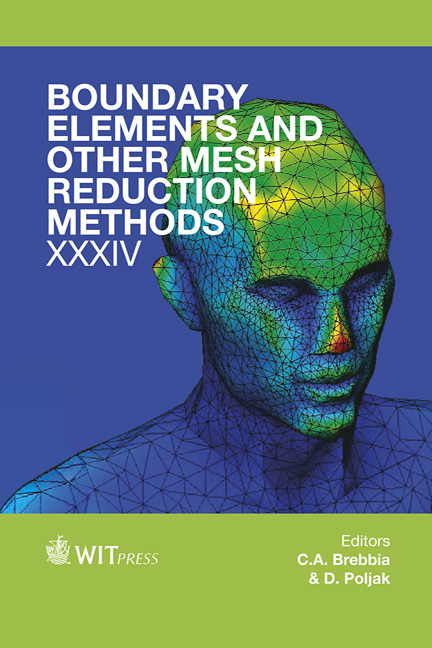Simulation Of Ferrofluids By BEM
Price
Free (open access)
Transaction
Volume
53
Pages
12
Page Range
167 - 178
Published
2012
Size
830 kb
Paper DOI
10.2495/BE120151
Copyright
WIT Press
Author(s)
J. Ravnik & L. Skerget
Abstract
In this paper the Boundary elementmethod (BEM) was applied to simulate viscous flow of ferrofluids under the influence of a homogenous external magnetic field. We present a derivation of the boundary integral form of the vorticity transport equation, which includes magnetic body force terms. Furthermore, discretization and numerical solution of the coupled flow and heat transfer problems are presented. The derived numerical model has been used to study the effect of a homogenous external magnetic field on the natural convection of ferrofluids in a differentially heated enclosure. We established that the effects are negligible for magnetic Rayleigh numbers less or equal to the flow Rayleigh number. On the other hand, the magnetic body force changes the flow field significantly and contributes to the instability of the flow. Keywords: boundary element method, velocity-vorticity formulation, ferrofluid, natural convection, magnetic field. 1 Introduction A ferrofluid is a colloidal suspension of magnetic nanoparticles. The flow field of these fluids can be significantly altered by the application of magnetic fields. They can be used to develop microscale heat exchangers in MEMS devices. Since in miniature devices the flow is limited to low Reynolds numbers the heat is transferred mainly by diffusion, the magnetic field can be used to manipulate and enhance convection. Recently many researches have studied ferrofluids under the influence of the magnetic field (Hong et al. [4], Lajvardi et al. [5], Tynj¨al¨a et al. [13]) for a wide variety of applications. In this work we derive a boundary-domain integral form of the vorticity transport equation for a ferrofluid and present its numerical solution.
Keywords
boundary element method, velocity-vorticity formulation, ferrofluid, natural convection, magnetic field.





